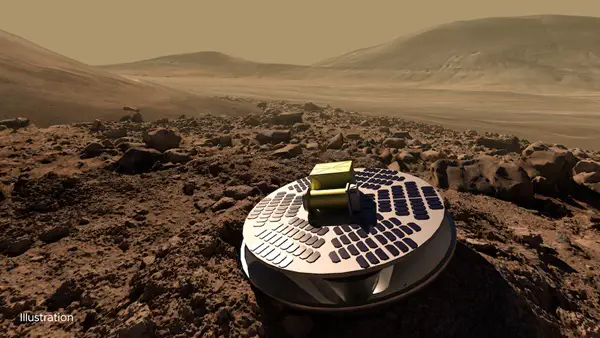Landing a spacecraft on Mars has remained one of the greatest challenges space agencies faced in the 20th century. But despite these challenges, NASA has successfully and safely landed spacecraft on the red planet nine times. However, the American space agency does not want to rely on its past means of landing spacecraft on Mars for its future missions to the red planet. Hence, NASA experts are currently working on the idea of crash-landing a spacecraft on Mars during the next missions.
During the past safe landing on the red planet, NASA always depends on airbags, parachutes, jetpacks, and other technologies to ensure that the spacecraft does not suffer any damage during touchdown on the Martian surface. In fact, the American space agency has successfully used this method on nine different occasions.
However, the American space agency wants to try out a method that they believed to be safer and less complicated. The idea behind this new landing method is to absorb enough energy during the hard impact using a Simplified High Impact Energy Landing Device (SHIELD) accordion-like collapsible base.

NASA experts develop the concept of SHIELD with the intention of returning NASA’s Mars sample collected by the Perseverance rover on the red planet. In fact, since the rover touched down on Mars in February 2021, it has gathered enough rock samples in its metal tubes and stored them safely in its belly. When the Perseverance team concludes on the exact time and location when the Mars samples will be taken for a return trip to Earth, the Rover will travel to the exact spot and deposit the samples it earlier collected.
The team will use a Sample Retrieval Lander to pick up the samples, while the Mars Ascent Vehicle would move them into orbit around Mars. The Earth Return Orbiter in Mars orbit will pick the same from Mars Ascent Vehicle and return them back to Earth. When it finally arrives on Earth, NASA will crash land the spacecraft with the samples in a deserted spot.
NASA engineers have always wondered if they can successfully handle the hard landing of the Earth Return Orbiter when it finally reaches home. To ensure that the Orbiter is safely recovered with the samples, a team of scientists began testing the idea. The team carefully placed a radio, a smartphone, and an accelerometer in their prototype SHIELD.
They pulled it to the top of a drop tower located at the Jet Propulsion Laboratory which is about 90 feet (27 meters). The team used a bow launch system to hurl the prototype at about 110 mph (177 km/h). Keep in mind that this speed is similar to the speed it takes a lander to land on the Martian terrain after its speed has been slowed down by Mars’ tenuous atmosphere.
What is the Outcome of the Test to crash land on mars
When the prototype crash landed, all the electronic devices installed inside the SHIELD were intact. However, some superfluous plastic components of the prototype were slightly damaged. The team noticed that the SHIELD flipped after its first impact. The team assumed that the metal sheet it struck caused the flip and not the lander’s design. The outcome of the study was recorded to be successful and NASA will likely implement it in its future landings on Mars.
“We think we could go to more treacherous areas, where we wouldn’t want to risk trying to place a billion-dollar rover with our current landing systems,” said Lou Giersch, SHIELD’s project manager, in a JPL press release.
However, NASA still has limited landing sites on the Martian surface for safety with our past technology. This implies that not all region on martian terrain is safe for landing rover. But as the SHIELD will eliminate the need for descent, entry, and other landing processes, NASA will be able to land its future rovers in new regions of the Martian surface. With this new means of safely landing a spacecraft on Mars, NASA will not become afraid of landing its billion-dollar spacecraft on the new region on Mars. The team will proceed to build the remaining part of the lander by 2023.
Conclusion
The idea of safely crash land on Mars has inspired NASA to research several possible ideas that will be actualized in the future. During NASA’s future missions to Mars, we should be expecting creativity and new ways of safely landing on the Martian terrain. What do you think about this technology?




